How China's High-Tech Weapons Could Balance the Scales in the South China Sea
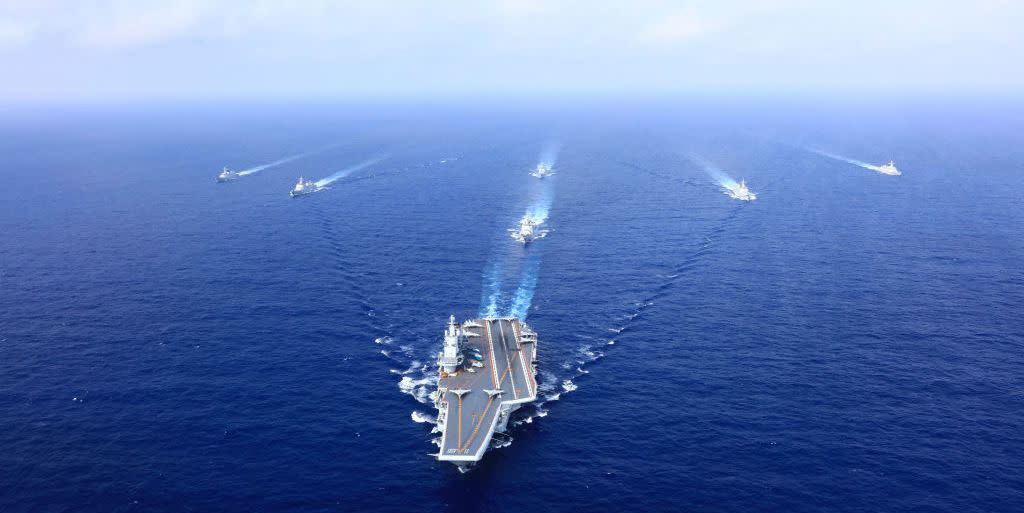
If you look at the South China Sea on a map, then it might seem inevitable that this 1.4 million square miles of water would become a territorial quagmire.
Bordered by China, Vietnam, Malaysia, the Philippines, and other nations, the area includes the busiest sea lanes in the world-about a third of the world shipping passes through every year, with cargo valued around $3 trillion. With evidence pointing to huge oil and gas reserves, all of the surrounding countries want a piece of the pie.
Recently, however, the game has changed in the South China Sea, and the reason is China flexing its muscle. Previously, China had not been strong enough to press its claims in the South China Sea, but things are changing under President Xi Jinping's military buildup. None of China’s neighbors has the military clout to stop it. But the U.S. does. And while America has officially not taken sides in the dispute-and would prefer to avoid an actual battle with China-the United States can bring overwhelming power to bear if needed, and has spent the past few years reorienting its attention toward the Pacific.
China, meanwhile, has little prospect of beating the U.S. in a straight fight. But the Chinese military is arming itself with exotic new weapons to neutralize the American advantage. “The biggest concern is that . . . they are getting to a point where the PLA leadership may actually tell [Chinese president] Xi Jinping that they are confident in their capabilities,” a U.S. Official told Reuters.
Here's what you need to know about a region that could become the world's next boiling point.
Rising Conflict
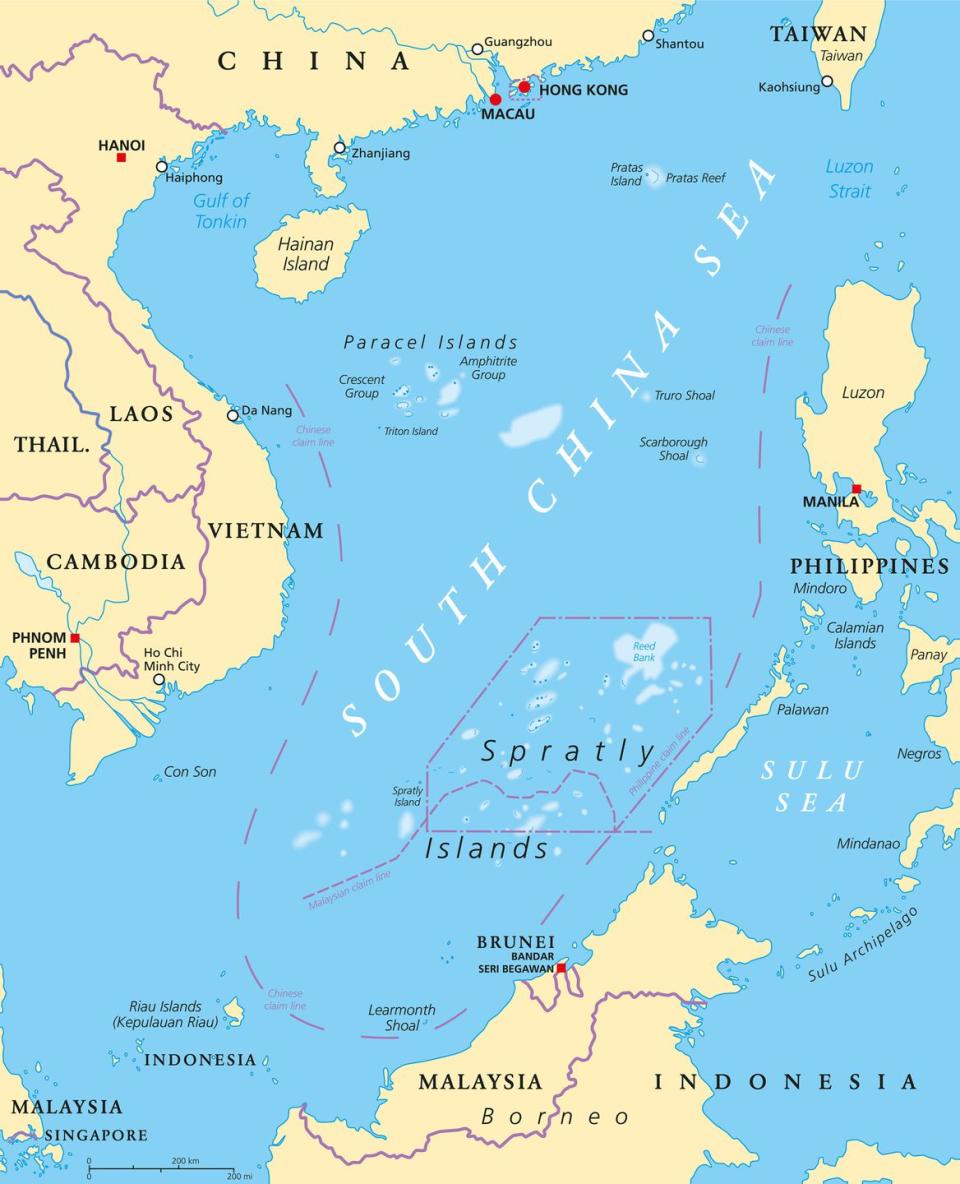
Disputes over who owns the South China Sea have been going on for decades. While China's cold clashes with the U.S. and its antagonism toward Taiwan grab the most headlines, the superpower has been in conflict with Vietnam, the Philippines, Japan, Indonesia, Taiwan, and Malaysia at one time or another.
China bases its maritime claim on centuries of history, when the Paracel and Spratly island chains were part of the country. China regards the so-called “nine dash line,” which extends more than a thousand miles from the Chinese coast in places and to within a few hundred miles of other countries, as sovereign territory and insists that that foreign military operations are not allowed in this zone.
China's backed up this assertion by building artificial islands in the South China Sea and putting military installations on the Paracel and Spratly Islands. In 2016, a UN tribunal supported the Philippines that China had violated its sovereign rights in the South China Sea. But China refuses to be bound by this ruling. If the past several years are any indication, don’t expect a diplomatic solution anytime soon.
Meanwhile the U.S. has responded to the Chinese claims with "freedom of navigation operations," asserting its right to traverse international waters by sailing American destroyers close to the Chinese bases. This has led to hostile encounters and near-collisions with Chinese warships, with one Chinese commander even suggested ramming American ships intruding in "their" waters.
Leveling the Playing Field
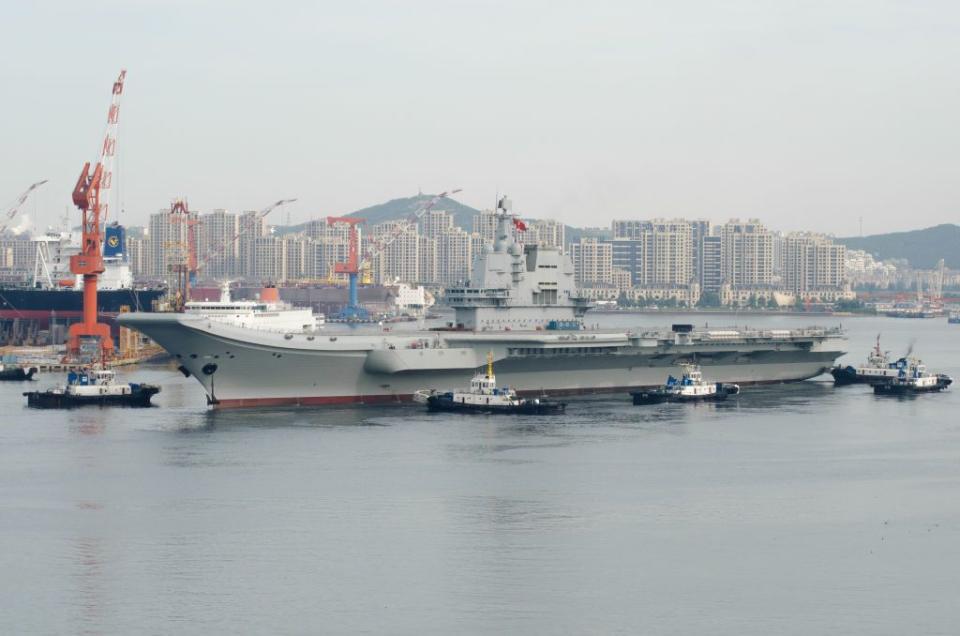
While ramming American ships isn't a sound military strategy, the commander's statement illustrates China's desire to challenge the U.S. in the South China Sea.
In addition to major air bases in Japan and Guam, America boasts ten Carrier Strike Groups, each comprising a nuclear-powered carrier packed with modern aircraft and accompanied by heavily-armed support ships. China has two carriers, only one of which is in service (and both claimed to be obsolete). The PLA still on the learning curve of carrier operations.
For controlling the South China Seas's vital shipping lanes, submarines may be more important than surface vessels. But the U.S. Navy holds the advantage here, too, with 40 top-of-the-line nuclear-powered attack submarines. China has nine at most (and experts consider these markedly inferior). The U.S. is also well ahead when it comes to anti-submarine warfare capability.
While China is building more aircraft carriers and submarines to balance the scales, that process will take many years. A more immediate threat comes from what Chinese military planners call an assassin’s mace, a special type of weapon similar to the American concept of a silver bullet but with the added implication of allowing an apparently inferior combatant to overcome a superior one with a surprise attack.
China is drawing on a deep reserve of technical know-how to develop such weapons. Because of its national program bolstering scientific education in universities, China is now a powerhouse for high-tech research. “Every year we produce about 4 million science and engineering graduates, while America produces just 440,000,” Professor Jin Canrong told a recent forum in Hong Kong.
And that investment in technology expertise is already producing results.
Meet the Assassin's Mace
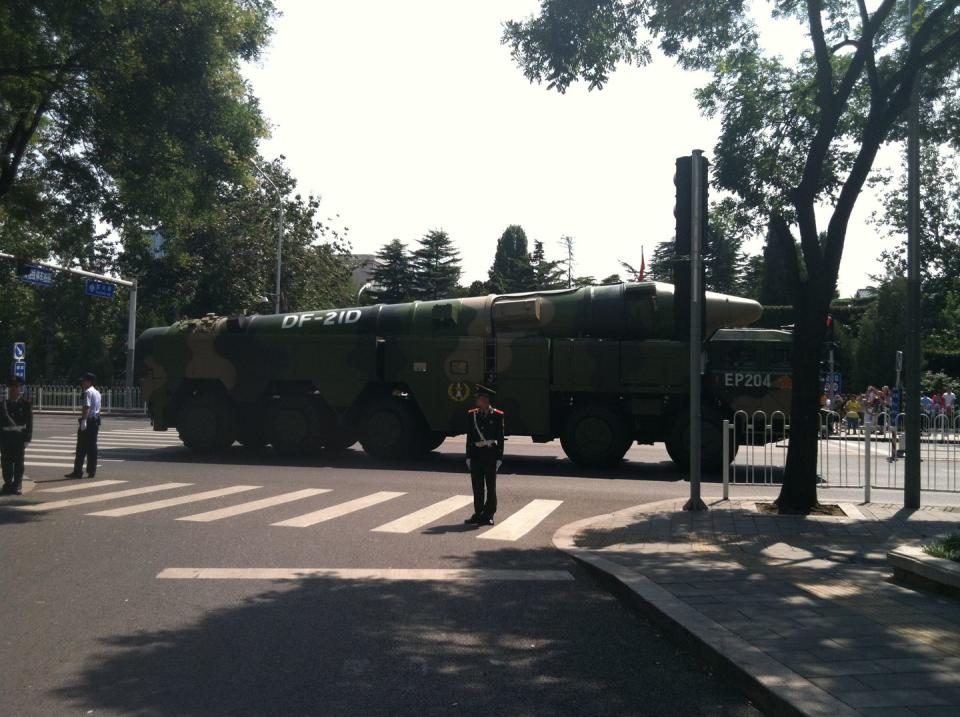
We've heard plenty of scare stories about China's newest military tech, including using a nuclear electromagnetic pulse to knock out electronics and overturn the U.S.’s technological advantage. Truth be told, such an attack would also risk nuclear retaliation. That's why China is investing heavily in weapons tech like the assassin’s mace, which is based on conventional weaponry.
Much as been made of “carrier killers,” China’s large ballistic missiles fitted with conventional warheads to take out warships. After the latest freedom of navigation operation, the Chinese made a point of announcing that new land-based missiles able to sink U.S. warships had been deployed.
One of these missiles is the DF-21D, but it’s not clear how dangerous it really is. An aircraft carrier is not a fixed target like an airbase. Even in the few minutes it takes for a ballistic missile to arrive, the target may have travelled a mile or more. To hit one, the missile needs good terminal guidance, and so far the DF-21D has only been tested against stationary targets. It may be more of a Guam Killer than anything else.
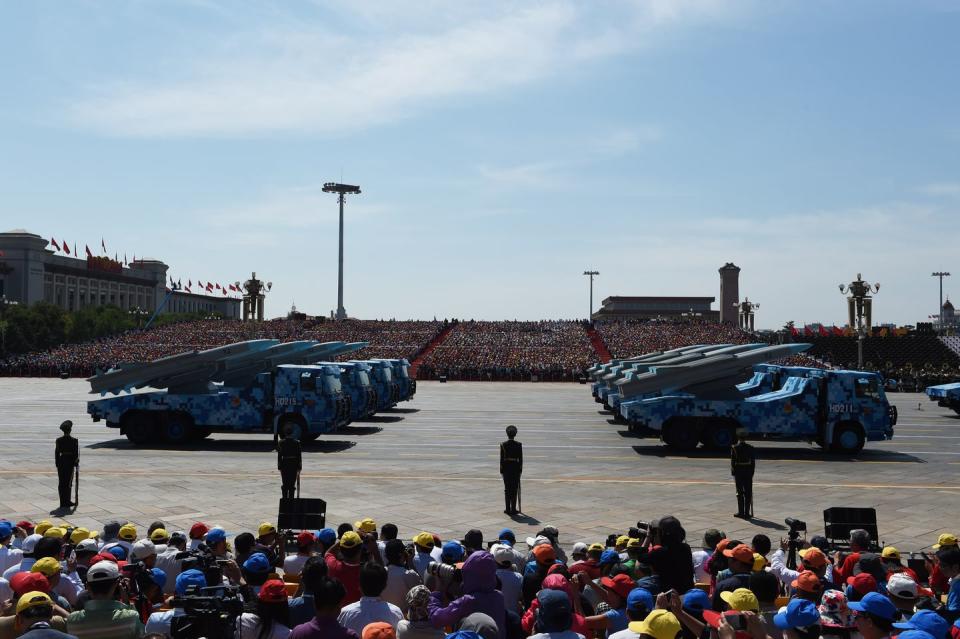
So the PLA is working on another means of tackling the America’s carrier advantage: hypersonic missiles. Flying at high speed within the atmosphere, these missiles wouldn't have the guidance problems of ballistic anti-ship missiles. The Chinese have already claimed that their DF-17 missile is unstoppable at high speeds and that eight of them could sink a carrier.
China’s surface fleet might also be upgraded with game-changing weaponry. Railguns, electromagnetic cannon able to fire projectiles at incredibly speeds, have been seen as the next big thing for naval warfare. China has claimed an advantage in this area, having apparently already mounted a railgun on a ship while the equivalent U.S. Navy program will not go to sea until at least 2020 (and even that looks doubtful). But it’s not entirely clear that the Chinese railgun even works.
While this railgun could level the odds on sea, Chinese airpower still lags behind the U.S. Air Force, but the PL-XX missile is designed to change those odds, too. This big, long-range air-to-air missile could target U.S. airborne early warning and tanker aircraft. These normally remain behind the front line and out of danger, but they are easy, non-stealthy targets without the agility of fighters. By taking out these support aircraft, China would seriously erode American air capability.
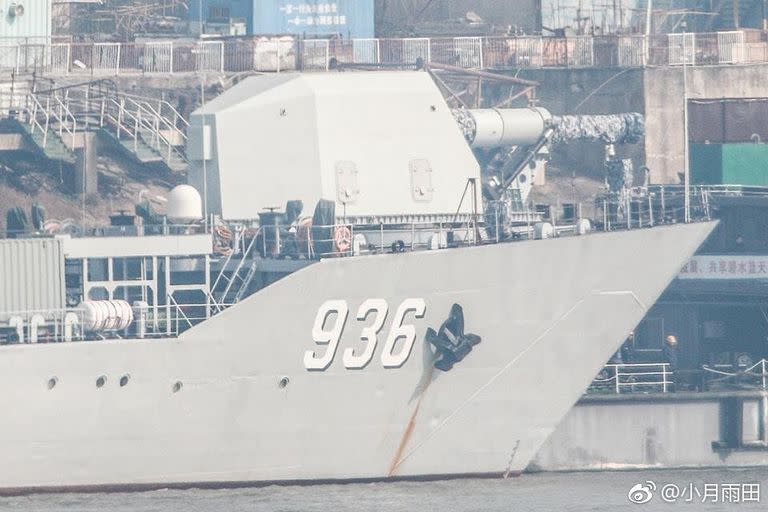
China also wants to cancel out America’s advantage in submarines with the Underwater Great Wall in the South China Sea. With a vast array of seabed sensors linked by fiber-optic communications cables, this “wall” uses robots that can plug into underwater recharging points to transfer data and recharge.
The Underwater Great Wall could give unparalleled ability to locate submarines in the area and attack them with weapons like the Yu-8 missile, a weapon designed to make up for China’s dearth of submarine hardware. Launched from an aircraft, the Yu-8 hits the water and releases an anti-submarine homing torpedo. It works much like China’s WS-3 missile that launches from land.
But not every answer to U.S. martial superiority relies on high-tech know-how. Old-fashioned ideas like sea mines remain an effective way of preventing the movement of shipping. One Chinese study looked at the possibility of planting over 11,000 mines in a few days to effectively blockade Taiwan, noting that the PLA have nearly five hundred ships and aircraft capable of laying mines. Submarines might also lay mines around U.S. Naval bases as a way of delaying a military response.
For the U.S.’s part, planners are not ignoring all these growing threats. The Aegis defense system has been upgraded, and in a 2016 test, two SM-6 missiles intercepted a “complex medium-range ballistic missile target.” In other words, they’re already getting ready to shoot down those DF-21 carrier-killer missiles.
Details of other countermeasures are hard to come by, but it’s a near certainty that other high-tech shields will be developed in order to parry every assassin’s mace the PLA can swing.
When Two Powers Collide

As a new DIA report makes clear, China is rapidly gaining confidence in its military power. Any action will be at a time and place of China’s choosing, when they believe they can win a conflict-or compel the U.S. to back down in the face of overwhelming force.
But miscalculations and assumptions could prove deadly. If the Chinese count on their carrier killers working as planned, they could easily end up in a conflict they cannot win. And if the U.S. assumes that the carrier killers are a paper tiger, a single defensive error could cause massive casualties.
No single technology or weapon is likely to change the situation. But the PLA’s growing confidence and the stream of Chinese high-tech weaponry is slowly leveling the balance of power as a perilous collision inches closer.
('You Might Also Like',)


